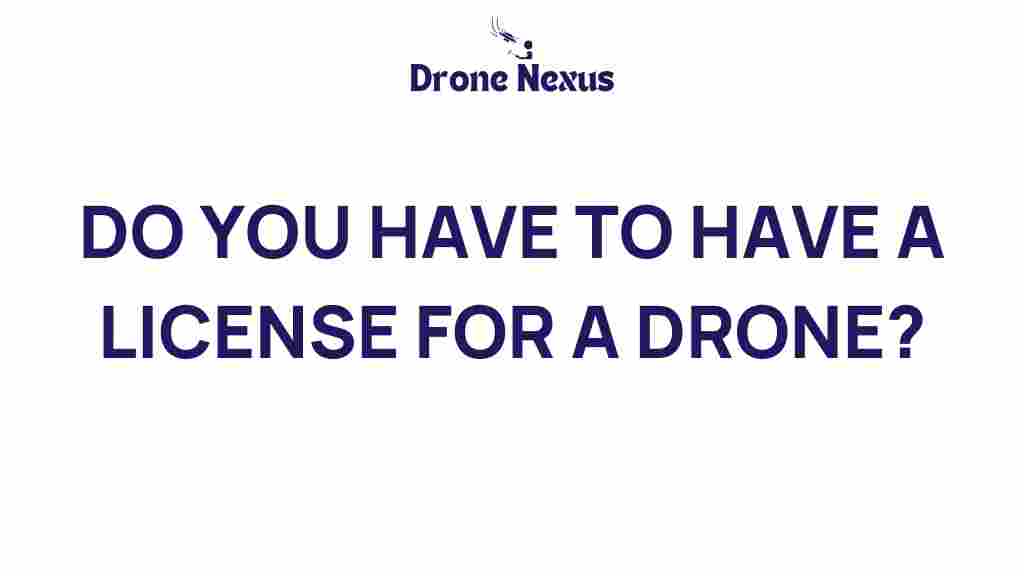Do You Really Need a License to Fly a Drone? The Surprising Truth About Drone License
The rise of drone technology has opened up numerous opportunities for both recreational and commercial use. However, many aspiring drone pilots often wonder: do you really need a license to fly a drone? The answer isn’t as straightforward as you might think. In this article, we’ll explore the ins and outs of drone licensing, including who needs it, how to obtain it, and the consequences of flying without one.
Understanding Drone Licensing
A drone license is a certification that allows individuals to operate drones legally, particularly in commercial scenarios. In various regions around the world, regulations dictate the need for a drone license, especially for those using drones for professional purposes. Here’s a breakdown of the key factors surrounding drone licensing:
- Regulatory Bodies: Different countries have different regulatory bodies overseeing drone operations. For example, in the United States, the Federal Aviation Administration (FAA) governs drone regulations.
- Types of Licenses: The type of license required can vary based on the intended use of the drone, whether recreational or commercial.
- Age and Identification: Most regulatory bodies require operators to be at least a certain age and possess valid identification.
Who Needs a Drone License?
Understanding whether you need a drone license largely depends on how you plan to use your drone. Here’s a clearer breakdown:
- Recreational Users: In many countries, individuals flying drones exclusively for personal enjoyment typically do not need a license. However, they must still adhere to basic safety guidelines and regulations.
- Commercial Users: If you plan to use a drone for business purposes—such as aerial photography, surveying, or delivery services—you will almost certainly need a drone license.
- Weight Limitations: Some countries require a license based on the weight of the drone. In the U.S., for instance, if your drone weighs more than 0.55 pounds (250 grams), you may need to register it.
How to Obtain a Drone License
Securing a drone license involves several steps. While the process may vary by country, the following are general guidelines you can expect:
Step 1: Understand the Requirements
Before beginning the application process, familiarize yourself with the specific regulations in your area. This includes:
- Age requirements
- Medical qualifications
- Knowledge of airspace rules and safety regulations
Step 2: Take a Training Course
Many regulatory bodies recommend or require drone pilots to complete a training course. These courses often cover:
- Basic drone operation
- Safety protocols
- Airspace classifications
Some courses may be available online, while others may be offered in-person by certified instructors.
Step 3: Pass the Exam
After completing your training, you’ll likely need to pass a written examination. This test typically assesses your knowledge of:
- Drone regulations
- Weather conditions
- Flight operations
In the U.S., for instance, the FAA requires the Remote Pilot Certificate, which involves a comprehensive test.
Step 4: Apply for the License
Once you pass the exam, you can apply for your drone license. This usually involves submitting:
- Proof of training completion
- Exam results
- Application fees
After a review, you should receive your drone license, allowing you to operate legally.
Consequences of Flying Without a License
Operating a drone without a valid license can result in serious consequences, which may include:
- Fines: Many countries impose hefty fines on unlicensed drone operators, which can range from hundreds to thousands of dollars.
- Seizure of Equipment: Regulatory authorities may confiscate your drone if you are caught flying without a license.
- Legal Action: In extreme cases, flying without a license can lead to legal repercussions, including criminal charges.
Tips for Successful Drone Operation
Once you obtain your drone license, it’s crucial to follow best practices while flying. Here are some tips to ensure safe and responsible drone operation:
- Stay Informed: Regularly check for updates on regulations as they can change frequently.
- Maintain Your Drone: Regularly inspect and maintain your drone to ensure it’s in good working condition.
- Respect Privacy: Always be mindful of privacy laws and avoid flying over private property without permission.
- Plan Your Flight: Before taking off, plan your flight path and be aware of any restricted airspace in your area.
Troubleshooting Common Drone Issues
Even with a drone license, you may encounter issues while flying. Here are some common problems and troubleshooting tips:
Issue 1: Drone Won’t Connect to the Controller
- Solution: Ensure that both the drone and controller are fully charged. Restart both devices and try reconnecting.
Issue 2: Poor Signal Strength
- Solution: Move to an open area away from buildings and trees that may block the signal. Check for any interference from other electronic devices.
Issue 3: Drone Drifting or Losing Control
- Solution: Make sure the GPS is functioning correctly and recalibrate the drone if necessary. Also, check for wind conditions that may affect flight.
For more detailed troubleshooting, you can refer to the official drone manufacturer’s guide.
Conclusion
In conclusion, whether you need a drone license depends on how you intend to use your drone. While recreational users may fly without one, commercial operators must obtain the proper certification to comply with regulations. Understanding the licensing process and following best practices is crucial for responsible drone operation. Always stay informed about local regulations, as they can change, ensuring that you fly legally and safely. For those eager to explore the skies, a drone license is not just a requirement; it’s a pathway to a new world of possibilities!
This article is in the category Safety and created by DroneNexus Team
